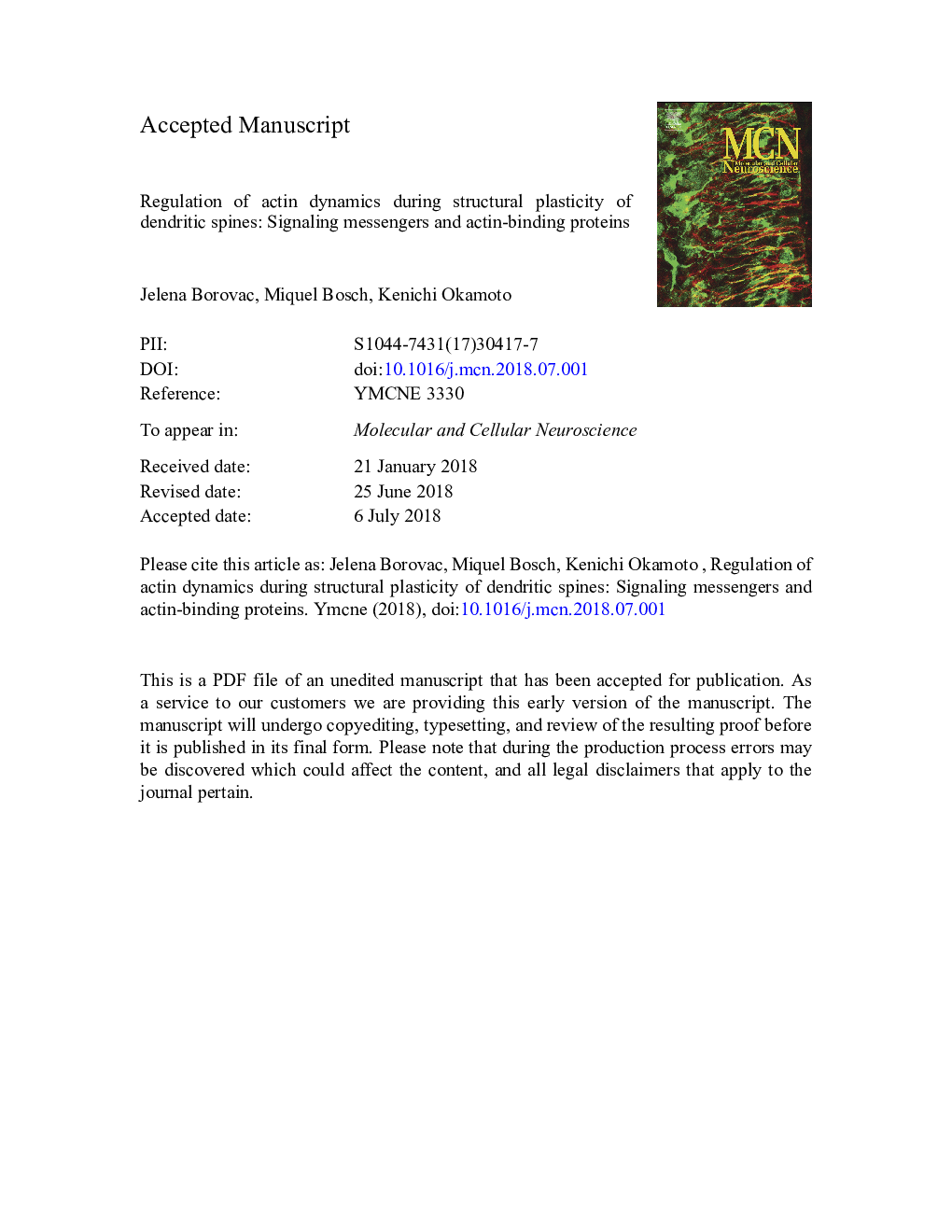| Article ID | Journal | Published Year | Pages | File Type |
|---|---|---|---|---|
| 8962267 | Molecular and Cellular Neuroscience | 2018 | 43 Pages |
Abstract
Activity-dependent plasticity of synaptic structure and function plays an essential role in neuronal development and in cognitive functions including learning and memory. The formation, maintenance and modulation of dendritic spines are mainly controlled by the dynamics of actin filaments (F-actin) through interaction with various actin-binding proteins (ABPs) and postsynaptic signaling messengers. Induction of long-term potentiation (LTP) triggers a cascade of events involving Ca2+ signaling, intracellular pathways such as cAMP and cGMP, and regulation of ABPs such as CaMKII, Cofilin, Aip1, Arp2/3, α-actinin, Profilin and Drebrin. We review here how these ABPs modulate the rate of assembly, disassembly, stabilization and bundling of F-actin during LTP induction. We highlight the crucial role that CaMKII exerts in both functional and structural plasticity by directly coupling Ca2+ signaling with F-actin dynamics through the β subunit. Moreover, we show how cAMP and cGMP second messengers regulate postsynaptic structural potentiation. Brain disorders such as Alzheimer's disease, schizophrenia or autism, are associated with alterations in the regulation of F-actin dynamics by these ABPs and signaling messengers. Thus, a better understanding of the molecular mechanisms controlling actin cytoskeleton can provide cues for the treatment of these disorders.
Keywords
Related Topics
Life Sciences
Biochemistry, Genetics and Molecular Biology
Cell Biology
Authors
Jelena Borovac, Miquel Bosch, Kenichi Okamoto,
